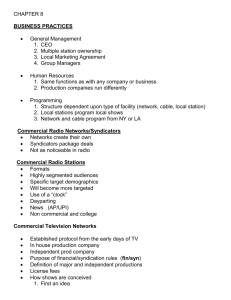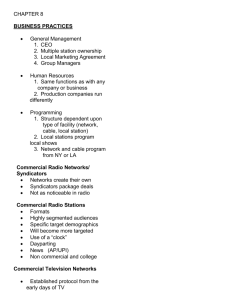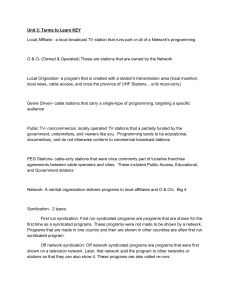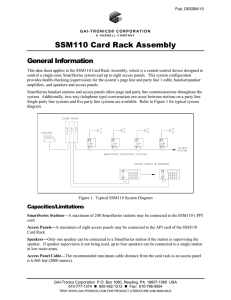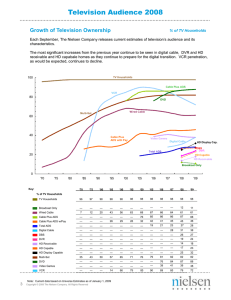Radio and TV Programming Matakuliah : G0462/English for Broadcasting Tahun
advertisement
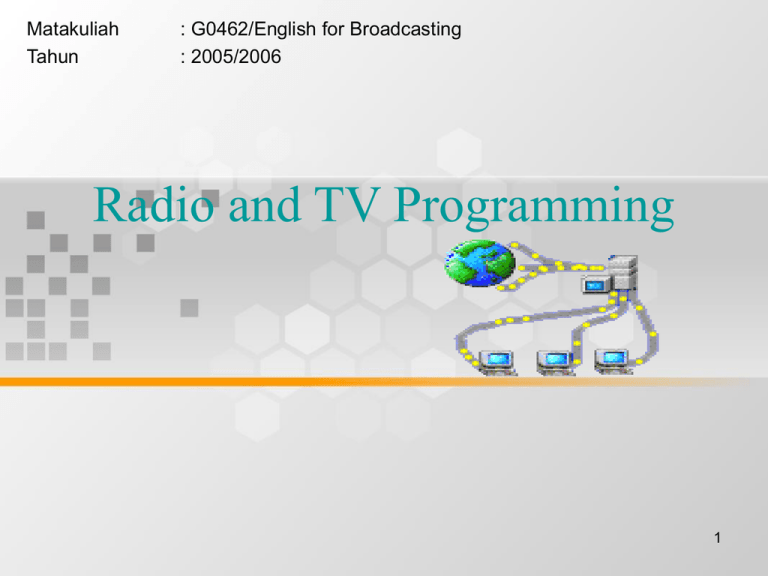
Matakuliah Tahun : G0462/English for Broadcasting : 2005/2006 Radio and TV Programming 1 Matrix of Radio Programming • Local • Prerecorded or syndicated • Network sources 2 Modes of Radio Production • Local-live • Live-assist • Semi-automation • Turnkey automation 3 Three Parts Structure • Program Openings • The Body of the Program • Program Closing 4 Format in a Radio The overall sound and image of the radio stations: its comprehensive approach to its talk, music, advertisement, promotional strategies, community relations, personalities and other factors. 5 A Successful Format • To identify and serve predetermined set of listeners. • To serve those listeners better than the competition. • To reward those listeners both on and off the air, so they become consistent customers for the products and services advertised on the station. 6 Choosing a Format • Internal factors: Ownership, dial location, power, technical facilities, and management philosophy. • External factors: Strength of competitors, geography, demographic, and psychographic. 7 Non-commercial Programming • Public • University • Community 8 A Hot Clock Radio Program • • • • Morning drive Daytime Evening drive Overnight 9 TV Programming • News • Entertainment 10 TV News Command Structure 11 TV Entertainment Programming • Network • Syndication • Local origination 12 Network Original programming funded by, produced for, and distributed by the major TV and cable networks. 13 Syndication TV programming sold by distribution companies to local TV stations and cable services. 14 Local origination Programs produced by local TV (or cable companies) for viewers in their own communities. 15 Programming Strategies • Audience Flow • Counter Programming • Challenge Programming 16 Audience Flow The movement of audiences from one program to another. 17 Counter-Programming A technique wherein the programmer decides to go for an audience different from the audience that competing stations or networks are trying to attract. 18 Challenge Programming The network or station goes head-to-head with the same type of programming as a major competitor, or goes after the same demographic with a different program with similar audience appeal. 19
